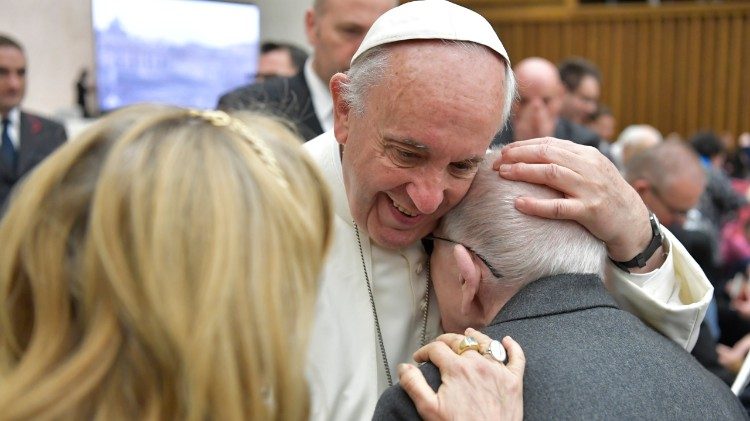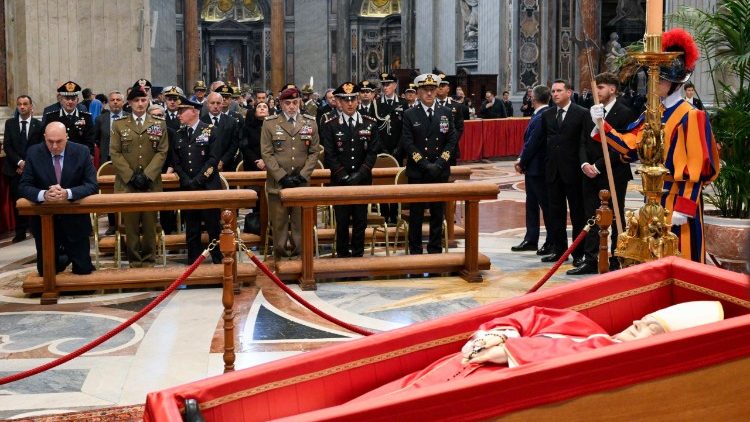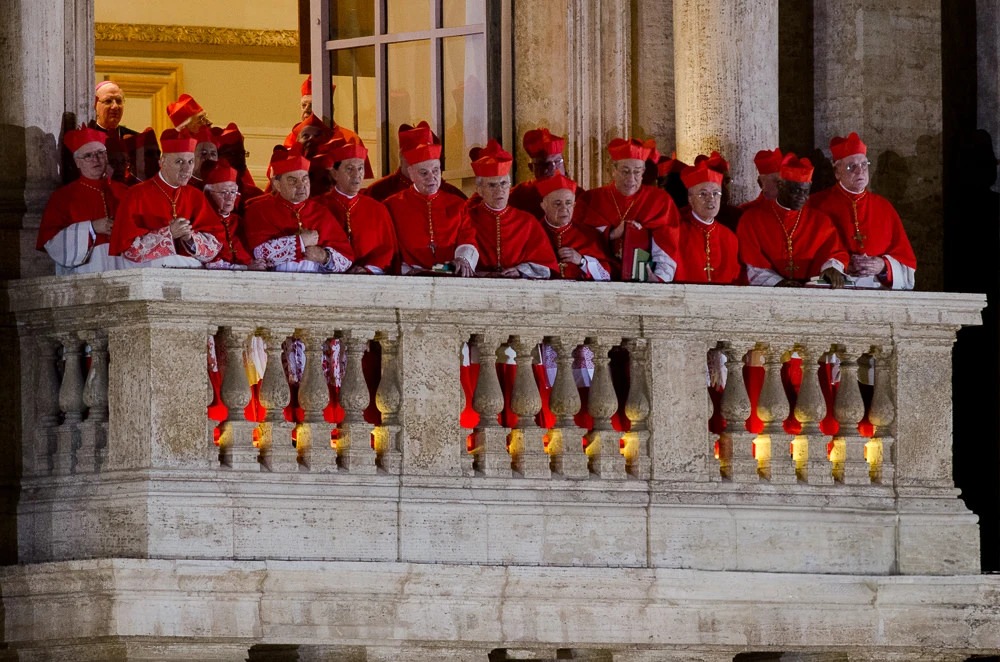The Eucharist at the Heart of Summer
medita+

Starting on Sunday 17th in Ordinary Time, in the middle of summer, the liturgy of the Holy Mass focuses on Chapter 6 of the Gospel of St. John, known as the “Eucharistic Discourse.” This approach is particularly relevant for this season, when mobility increases and, no matter where we are, we always have a nearby Tabernacle as a spiritual and material point of reference.
This discourse invites us to delve deeper into the Eucharist during the summer, reminding us that even if we are on vacation or far from home, the presence of Christ in the Eucharist remains our center. In every Mass, in every Tabernacle, we find the peace and direction that our souls need.
An interesting aspect is the reflection on World Youth Day (WYD). Although in its first editions young people came attracted by the charismatic figure of Pope John Paul II, over time WYD has evolved. Under the pontificate of Benedict XVI, a key moment of adoration of the Blessed Sacrament was introduced, pointing to Christ as the true protagonist, beyond any human figure. This underlines that true relationship and communion does not end with the event, but continues in the personal encounter with Christ in the Eucharist, present in our own parishes and communities.
This theme connects in a profound way with the miracle of the loaves and fishes, narrated in the Gospel of John. In this miracle, Jesus tests his disciples, challenging them to feed a multitude, even though it seems impossible with the scarce resources available. This story, more than just a miracle, acts as a symbol of the Holy Mass: Jesus goes up a mountain, preaches, and then feeds the multitude, transforming a few loaves and fish into abundant food for all. Likewise, in the Mass, Jesus takes the bread and wine, blesses them and transforms them into his Body and Blood, offering his life as spiritual nourishment for all who participate.
In conclusion, summer, with its liturgy centered on the Eucharist, invites us to put our resources, however small, into God’s hands. Just as the disciples offered five loaves and two fish, we must be creative and do what is within our reach, knowing that the Lord will do the impossible. Finally, we are called to rest in Him, trusting that He is in control, as we feed on His Body and Blood in every Eucharist, the true food of our souls.
Bread of Eternal Life in a Materialistic World
In the Gospel of St. John, chapter 6 reveals one of the most profound and transcendental discourses of Jesus: the Eucharistic discourse. Through a careful and progressive reading of this chapter, we discover Jesus’ teaching about a spiritual food, incomprehensible to those who witnessed the multiplication of the loaves and fish. Jesus, by feeding them physically, opens the door to a much deeper spiritual reality, which is His own Body and Blood, food of eternal life.
In the reading for Sunday 18, Jesus presents himself as the “bread of eternal life.” This concept, far from referring to mere biological food that satisfies physical hunger, points to a spiritual dimension. Just as daily bread sustains our physical life, the Eucharist sustains our spiritual life, a life that transcends the material.
This discourse confronts two realities: the material world and spiritual life. We live in a materialistic culture, where success, pleasure, and comfort are often the ultimate goals. However, Jesus invites us to raise our gaze, to recognize that our true essence is not found only in the biological, but in the spiritual. Materialism, with its emphasis on the tangible and scientific, has relegated the spiritual to the background, as something abstract or unreal.
The Eucharist, however, reminds us that there is a deeper dimension in our lives. To the extent that we experience love, dedication, friendship, and service, we begin to glimpse this spiritual reality that the Eucharist offers us. It is not a passing satisfaction, but a lasting fulfillment that gives meaning and peace, overcoming the anxieties and addictions generated by the continuous search for ephemeral pleasures.
Jesus, as the bread of eternal life, offers a satisfaction that does not fade. He invites us to a deeper relationship with Him, a relationship that is cultivated through the Eucharist and that transforms us into people more like Him: people of love, service and dedication. As Pope Benedict XVI explained to a child: although we cannot physically see Jesus in the Eucharist, its effects are visible in the transformation it produces in those who receive it.
This call to transcend the merely biological to enter into a life of relationship and spiritual fulfillment is a challenge in a world that values the material more. However, it is in the Eucharist where we find the nourishment for that life of love and surrender that truly fills the human heart, a life that is the reflection of God’s eternal love.
Called to find Christ
The 19th Sunday of Ordinary Time presents us with a crucial fragment of chapter 6 of the Gospel of St. John, known as the Eucharistic discourse. This chapter begins with the multiplication of loaves and fishes, where Jesus feeds a multitude, which generates great enthusiasm among the people. The next day, they look for Jesus, but instead of continuing with the miracles, He begins a discourse that is difficult to accept: He speaks of eating His body and drinking His blood as the true food of heaven, which causes bewilderment among the listeners.
Jesus insists that He is the bread that has come down from heaven, and whoever eats this bread will live forever. His words confront an audience who know him well, especially in Galilee, where they know he is from Nazareth, they know his mother, and they cannot understand how he can claim to have come down from heaven. This speech invites us to reflect on the nature of Christ, who is not just a teacher or prophet, but someone who proclaims a divine truth that defies human expectations.
In a Western context marked by secularization, where faith in Christianity has declined, especially among younger generations, the figure of Christ remains relevant. Although many do not identify with institutional religions, a spiritual search persists. The “numinous” experiences of everyday life, such as the contemplation of nature, love or moral awareness, are examples of how people still search for a deeper meaning.
However, the experience of Christ is something radically different. It is not simply a horizontal, natural experience, but a vertical, transcendent experience that transforms the lives of those who encounter Him. Christ is not a wise teacher or a prophet; His words and actions do not conform to the expectations of an ordinary man, but reveal his divine nature.
The encounter with Christ, as presented in the Gospel of St. John, is a fundamental decision in the life of every person. It is not a simple religious experience, but a transformative encounter that marks a before and after. This encounter can occur through the meditative reading of the Gospel, the contemplation of Christian art, knowledge of the lives of the saints, or approaching the sacraments, especially the Eucharist.
The New Evangelization, promoted in recent pontificates, focuses precisely on this: on leading people to a personal and profound encounter with Christ. Although modern culture may seem far removed from faith, this encounter remains possible and desirable. Christian faith, when found authentically, fits into a person’s life like “Cinderella’s shoe,” something that seems destined and perfect for him or her.
In short, the 19th Sunday of Ordinary Time invites us to confront the figure of Christ in all his radicality. His message challenges not only those who heard him in his time, but also us today, in a world that continues to search for spiritual answers in the midst of secularization. The call to encounter Christ remains urgent and transformative.
Related

Pope Francis: Leadership That Transforms Through Service
Javier Ferrer García
25 April, 2025
4 min

The heart of the Church beats between mourning and hope
Exaudi Staff
24 April, 2025
2 min

What is a Conclave? The Process That Elects the New Pope
Exaudi Staff
24 April, 2025
7 min

Current Status of the College of Cardinals
Exaudi Staff
23 April, 2025
14 min
 (EN)
(EN)
 (ES)
(ES)
 (IT)
(IT)

